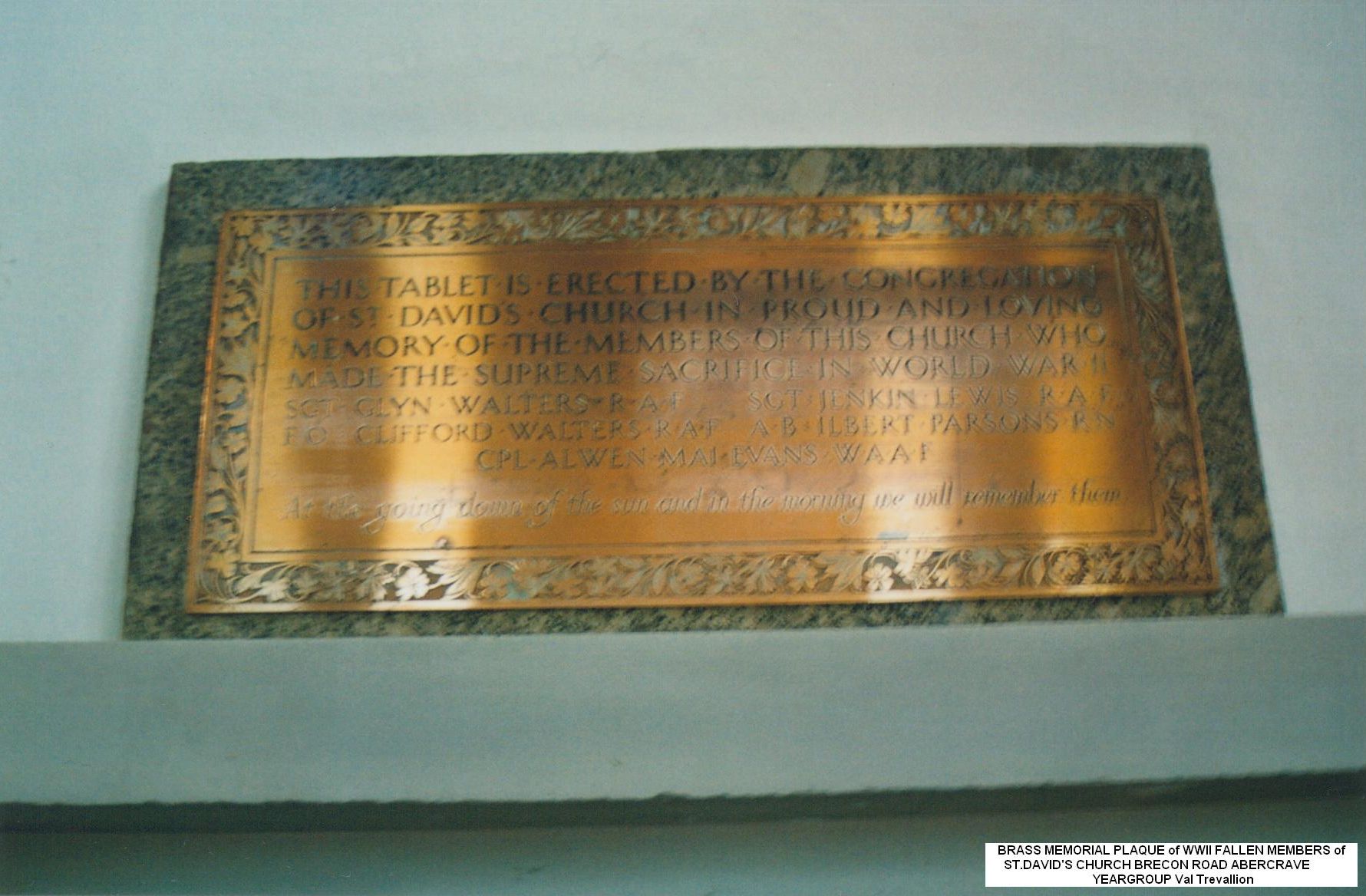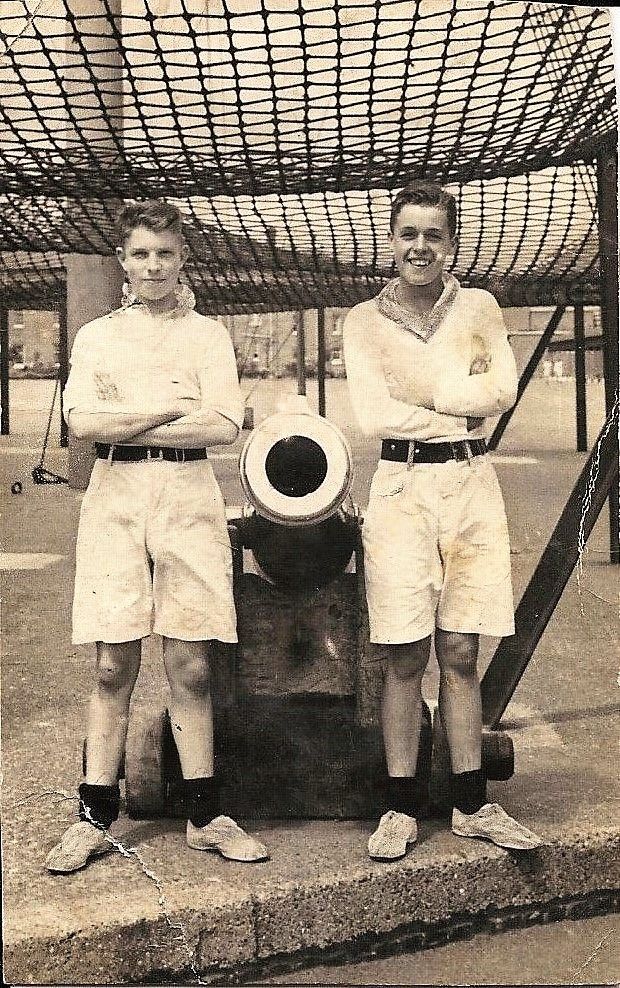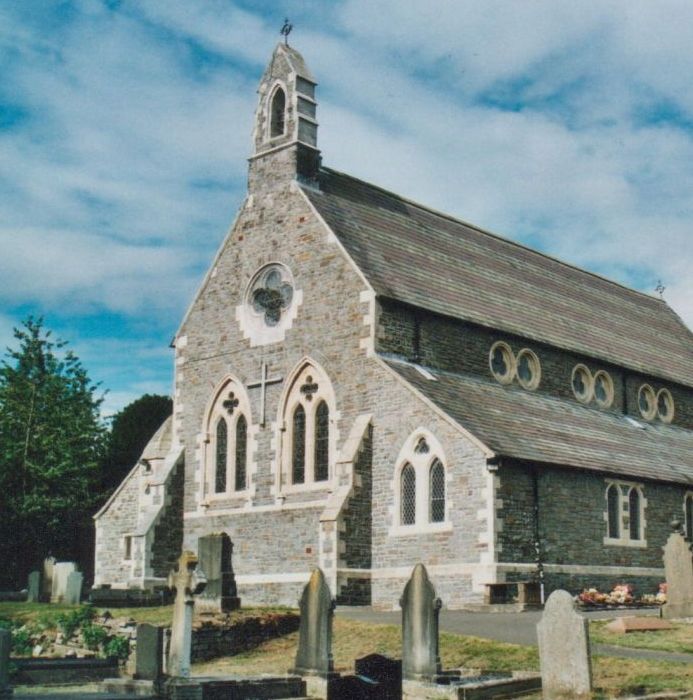The War Graves of Ystradgynlais
Ilbert Parsons
Ilbert Parsons served aboard the cruiser HMS Gloucester and was killed in action when she was sunk by German aircraft in the Aegean Sea, after trying to rescue survivors of another vessel.
The information on Ilbert Parsons has been compiled from a number of sources, including the Commonwealth War Graves Commission, from the South Wales Voice newspaper, and the Parish Burial Register (courtesy of the Swansea Archives).
| Name | Ilbert Parsons |
| Date of Death | 22nd May 1941 |
| Place of Death | Aegean Sea |
| Age at Death | 17 |
| Unit and Regiment | Royal Navy; H.M.S. Gloucester Previously HMS Bonaventure |
| Rank | Boy 1st Class |
| Service Number | D⁄JX 162778 |
| Local Memorials |
Ystradgynlais War Memorial
Brass Plaque in St. David's Church, Abercrave |
| Memorial | PLYMOUTH NAVAL MEMORIAL - DEVON UK.; Panel 49, Column 3. |
| Roll of Honour | Book - "ROLL OF HONOUR Ystradgynlais and District", St. Cynog's Church, Ystradgynlais. |
| Notes | Son of Morgan and Lilian Parsons of Abercrave, Swansea. |
From the South Wales Voice newspaper, 5th May 1945 :-
ABERCRAVE SEAMAN REPORTED DEAD
It is now about 4 years since Mr and Mrs Morgan Parsons, 6 Davies Street, Abercrave received the news that their son, Gunner Ilbert Parsons, who was serving on HMS Gloucester, which was sunk at Crete, was reported as missing.
Last week Mr and Mrs Parsons received a further communication from the Admiralty to say that Ilbert must now be presumed to have lost his life on war service, and that a formal presumption of his death on May 22nd 1941 has accordingly been made.
Some months ago a report was received at the Admiralty that all Imperial personnel in hiding in Crete, with the exception of one wounded Australian, had escaped to the Greek mainland. The time which has now elapsed since Greece was liberated has been sufficient to enavle any officer or man in hiding to declare himself, and the authorities concerned were unable to hold out any hope that Gunner Parsons is still alive.
His friends at Abercrave will remember him as a popular young man. He volunteered for service in 1938 and crowded many thrilling experiences into his young life, including his survival of the sinking of the Bonaventure, only six weeks before the sinking of HMS Gloucester.
A pupil of Caehopkin School, he left the district for a position with a well-known engineering firm in England. His brother, Leading Aircraftsman Leonard Parsons, is serving with the RAF overseas, while his sister, Miss Mary Parsons, is serving with the ATS.
The whole district conveys to Mr and Mrs Parsons and their family its profound sorrow that these long years of anxiety should have ended so happily, and also their deep sympathy with them in their great loss.
From the South Wales Voice newspaper, 26th May 1945 :-
BIRTHDAY MEMORIES
PARSONS - Sweet and loving memories of our dear son, Ilbert, born on May 29 1923, who lost his life on H.M.S. Gloucester in May 1941
At the going down of the sun,
And in the morning, we will remember him.
From Mammy, Daddy, brothers and sisters, 6, Davies Street, Abercrave.
The loss of HMS Gloucester can be read about at Wikipedia:-
Gloucester formed part of a naval force acting against German military transports to Crete, with some success. On 22 May 1941, while in the Kithera Channel, about 14 mi (12 nmi; 23 km)14 miles (26 km) north of Crete, she was attacked by German Stuka dive bombers and sank, having sustained at least four heavy bomb hits and three near-misses. Of the 807 men aboard at the time of her sinking, only 85 survived. Her sinking is considered to be one of Britain's worst wartime naval disasters.
The circumstances of the sinking were featured by a BBC programme. According to this, the despatch of Gloucester, alone and low on fuel and anti-aircraft ammunition (less than 20% remaining), into danger was a "grievous error". Furthermore, the failure to attempt to rescue survivors after dark was "contrary to usual Navy practice". A survivor commented "The tradition in the Navy is that when a ship has sunk, a vessel is sent back to pick up survivors under cover of darkness. That did not happen and we do not know why. We were picked up by Germans."
Another account of the sinking differs from, and adds to, the BBC report. In this, Gloucester and Fiji, both already low on ammunition, had been sent to support the rescue of survivors from the destroyer Greyhound. Fierce air attacks further depleted their ammunition and they were given permission to rejoin the main fleet. It was during their return that Gloucester was sunk. Fiji was sunk later the same day.
On 30 May 1941, in a letter to the First Sea Lord, Sir Dudley Pound, Admiral Cunningham wrote, "The sending back of Gloucester and Fiji to the Greyhound was another grave error and cost us those two ships. They were practically out of ammunition but even had they been full up I think they would have gone. The Commanding Officer of Fiji told me that the air over Gloucester was black with planes."

Ilbert Parsons (left) with his sister Peggy and brother Len.
Photograph provided by Jeff Alexander - Thank You.
The loss of HMS Bonaventure can be read about at Wikipedia:-
HMS Bonaventure was a Dido-class light cruiser of the Royal Navy.
On 31 March 1941 she was torpedoed and sunk south of Crete (33° 20'N 26° 35'E) by the Italian submarine Ambra with the loss of 139 of her 480 crew. 310 survivors rescued by HMS Hereward and HMAS Stuart.

The brass memorial plaque in Saint David's Church, Abercrave
Email Yeargroup:
yeargroup@hotmail.co.uk
Email Grey Wolf Web Design:
webdesign@wolfianpress.com

Click the cover to purchase the paperback
How To Write Alternate History is a series of articles by Grey Wolf, examining subjects such as the identity of man, whether man makes the weather, how the everyday in an alternate world is going to be changed and what names for music, vehicles, weapons etc would be different.


Ilbert Parsons on the right, with an as-yet unidentified lad. Thanks to Jeff Alexander for the photograph.


















